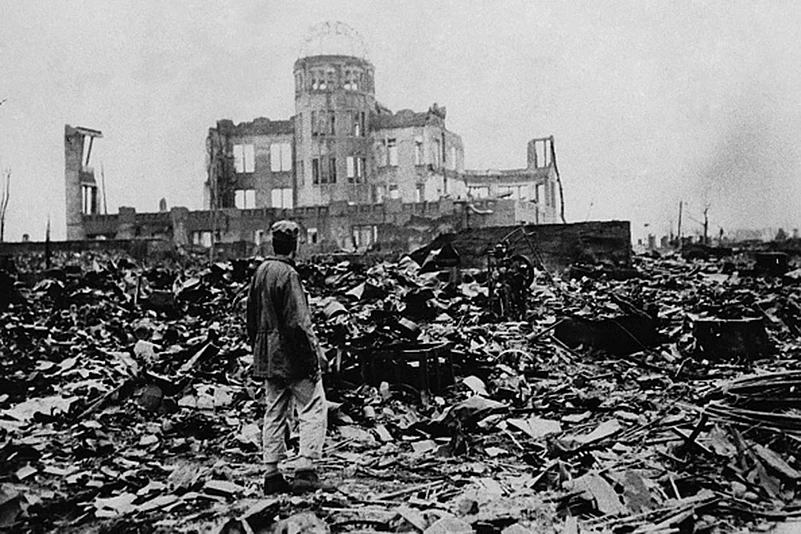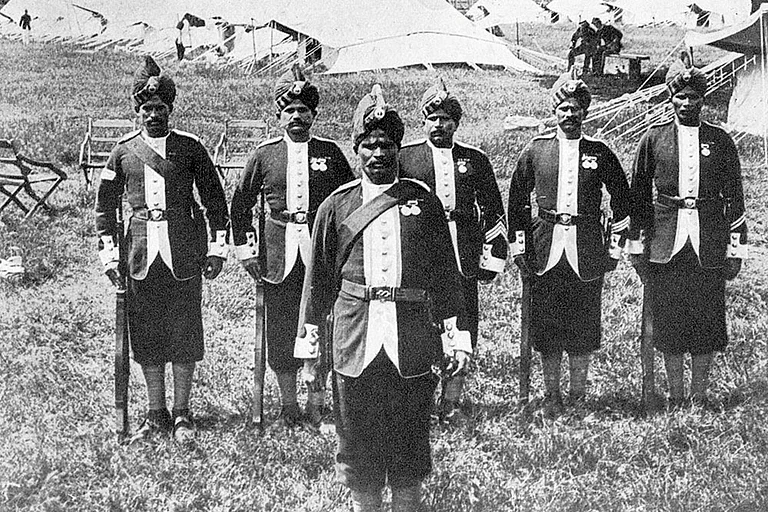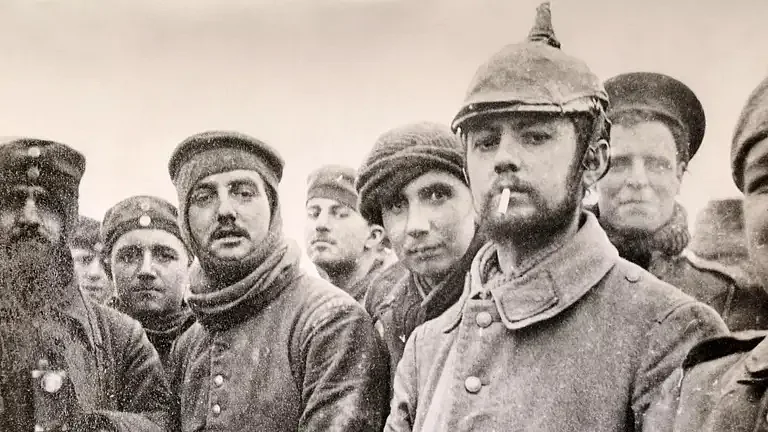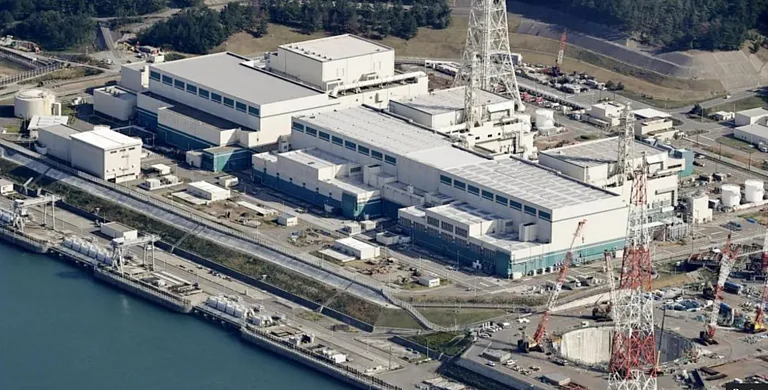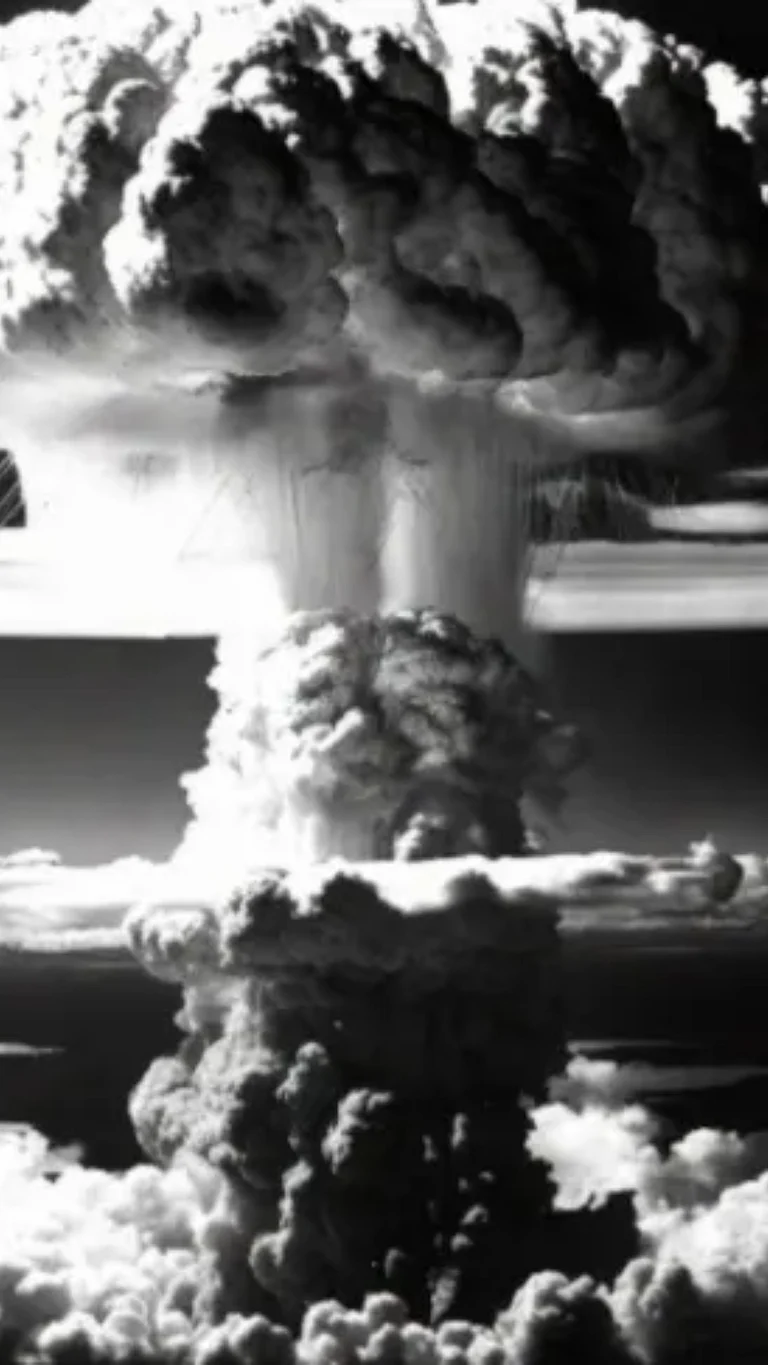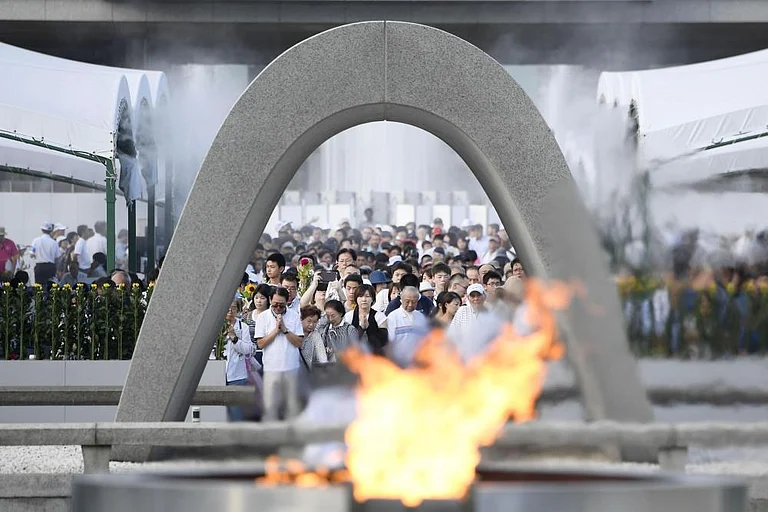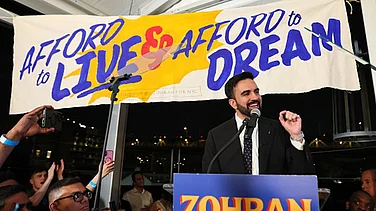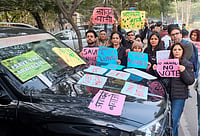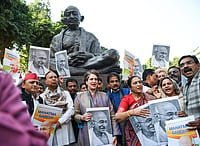
The atomic bombing of Hiroshima on August 6, 1945, killed an estimated 70,000 people instantly, with the death toll rising to approximately 140,000 by the end of the year.
On August 9, the bombing of Nagasaki claimed at least 74,000 lives by year’s end, as extreme heat and radioactive fallout devastated the city.
Threats of nuclear strikes have become disturbingly routine in global politics—from Israel’s attacks on Iran over uranium enrichment to Iran’s warning of withdrawing from the Nuclear Non-Proliferation Treaty. Recently, U.S. President Donald Trump ordered two nuclear submarines to be "positioned in the appropriate regions."
While wars, conflicts and escalations ravage the world, and the language of nuclear warfare becomes increasingly casual, it is worth pausing to remember the devastating human cost of the first and only use of nuclear weapons in war—on Japan.
The bombings of Hiroshima and Nagasaki stand as a stark reminder of the unimaginable destruction such weapons bring, and why they should never be used again.
Today marks 80 years since the United States dropped the atomic bomb known as Little Boy on Hiroshima, delivering an equivalent of around 12.5 kilotons of TNT within seconds. It instantly killed an estimated 70,000 people.
In the months that followed, tens of thousands more succumbed to radiation sickness, severe burns and dehydration. By the end of 1945, the death toll in Hiroshima had reached approximately 140,000, mostly children.
Three days later, just after 11 in the morning, a more powerful second bomb—Fat Man—was detonated over Nagasaki, killing at least 74,000 people by the year’s end. Ground temperatures soared to 4,000°C, and radioactive black rain fell from the sky. Of the dead, 38,000 were children.
It might just take seconds for the fireball from a nuclear explosion to reach its full size—but the devastation lingers for decades, leaving generational scars.
Five to six years after the bombings, cases of leukaemia began to rise sharply among survivors. By the following decade, elevated rates of thyroid, breast, lung and other cancers began to emerge, marking the long-term toll of radiation exposure.
Both cities were reduced to rubble, their landscapes unrecognisable. Corpses melted into the streets, and those who survived bore horrific injuries—many burned beyond recognition.
Survivors recall faces so badly scarred that only the eyes remained visible. The mountains appeared to be ablaze, and students in their classrooms witnessed an intense, blinding light racing toward them.
The bombs did not just kill civilians—they also claimed the lives of first responders, including doctors, nurses and firefighters. Many who might have been saved died waiting for help that never came.
The bombs ended World War II, even though it had already ended in Europe by August 1945.
Nazi Germany had surrendered on May 7. However, East Asia and the Pacific were still engaging in war and Japan showed no signs of surrender.
How did the atomic bombs come to be?
World War II was fought by millions from across the world, with Japan being a close ally of Germany and Italy. The three signed the Tripartite Act pledging mutual military and economic support for one another.
Against them were the ‘Big Four’ or ‘Allies’, namely Great Britain, the United States, the Soviet Union and China.
In the Pacific, Japan had been solemnly expanding its empire. It annexed Korea in 1910, invaded the Chinese province of Manchuria in 1931. By 1937, allegations of war crimes against Japan became commonplace.
In 1934, Japan quit the Five Power Treaty aimed to limit naval arms among the major powers of the time: the United States, Great Britain, Japan, France and Italy
Tensions between the United States and Japan escalated when Japan turned its military ambitions toward Indochina, aiming to secure the oil-rich territories of the East Indies.
In response, the U.S. imposed an embargo that restricted the export of vital materials such as oil, scrap metal, and aviation fuel to Japan, and also froze Japanese financial assets held in American banks.
Alongside these economic measures, Washington called for Japan to retreat from its occupied positions in China and Indochina.
By April 1941, anticipating an unavoidable clash, Japan had already begun formulating plans for a surprise attack on Pearl Harbor.
And then it did. At 7:58 AM, on December 7, 1941, the Ford Island command center issued a radio message: “AIRRAID ON PEARL HARBOR X THIS IS NO DRILL.”
Moments later, Japanese torpedo bombers swept into the harbor in coordinated pairs and trios, launching a swift and devastating assault that unfolded within minutes. About an hour later, a second wave—167 aircraft strong—descended to continue the bombardment.
The objective was to cripple the U.S. Pacific fleet. The attack sank several ships, destroyed hundreds of planes and ended thousands of lives. However, three important American aircrafts, the USS Lexington, the USS Enterprise, and the USS Saratoga, stationed at Pearl Harbor were not there on the morning of December 7th. They had been sent on missions during the days before.
On December 8th, US President Roosevelt addressed the nation, famously describing the Pearl Harbor attack as “a date which will live in infamy.”
That same day, Congress swiftly approved a declaration of war against Japan. Just three days later, Germany and Italy responded by declaring war on the United States.
The attack also acted as a catalyst in the development of nuclear weapons by the US, influencing the trajectory of the Manhattan Project—the top-secret initiative to build an atomic bomb.
On December 18, 1941—just days after the U.S. entered the war—the S-1 Committee, which had overseen atomic research before the Manhattan Project’s formation, convened its first official meeting.
This gathering marked the transition from pure research to full-scale development. As S-1 official James Conant observed, “The atmosphere was charged with excitement – the country had been at war nine days, an expansion of the S-1 program was now an accomplished matter. Enthusiasm and optimism reigned.”
This was happening against the backdrop of a costly World War II. When President Franklin D. Roosevelt died on April 12, 1945, the responsibility of ending World War II fell to Harry Truman.
The idea of launching a full-scale invasion of Japan raised serious concerns for Truman and his advisors. They had witnessed the determination of Japanese forces, driven by loyalty to the Emperor and a belief that surrender was dishonorable.
Civilians, including women and children, were being trained to fight with makeshift weapons, while kamikaze pilots had already shown their willingness to sacrifice themselves in suicide missions. The human cost of an invasion, they realized, would be staggering.
Shortly after taking office, Truman was briefed on the Manhattan Project. Following a successful test of the weapon in July 1945, Truman issued the Potsdam Declaration, demanding Japan’s unconditional surrender and warning of “prompt and utter destruction” if it refused. Japan did not respond.
On August 6, 1945, the American bomber Enola Gay took off from Tinian Island, carrying ‘Little Boy’. At 8:15 AM. Hiroshima time, the bomb was dropped.
After the August 9 attack on Nagasaki, the war had truly come to an end, with the formal announcement of Japan's surrender coming in on August 15.
“I realize the tragic significance of the atomic bomb,” President Truman said in a radio address on Aug. 9 that year. “Its production and its use were not lightly undertaken by this Government.
But we knew that our enemies were on the search for it. We know now how close they were to finding it. And we knew the disaster which would come to this nation, and to all peaceful nations, to all civilizations, if they had found it first.”
However, the words of Bob Lewis, a co-pilot on the airplane that dropped the bombs, wrote in his logbook, “My God, what have we done?”







